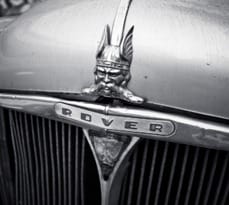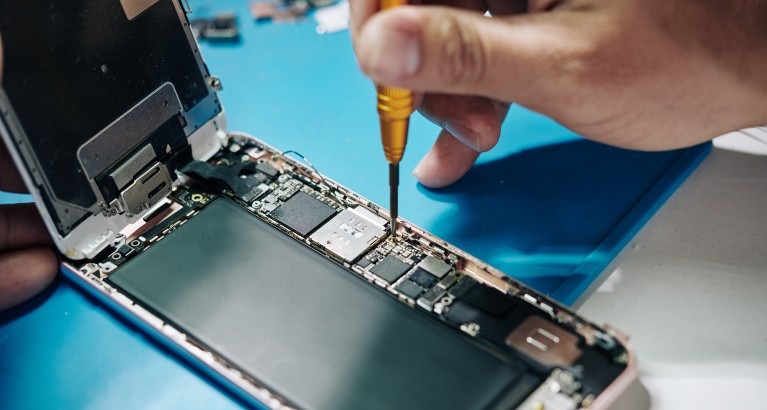The answer to this seemed simple: it was the Phoenix Consortium who had failed to turn around the ailing car company after having purchased it from BMW for £10, 5 years earlier.
But the experts knew that there was more to it than that. The company, once described as “the English Patient” by BMW in the 90s before the German owner washed its hands of its loss-making acquisition, had lacked sufficient management capability to compete effectively for decades.
Cambridge Judge Business School’s Dr Matthias Holweg and Professor Nick Oliver, who delved deeper into the company’s history for answers by interviewing more than 30 former CEOs, senior managers as well as government and union officials that shaped the company since 1968 made the following assessment: “Although apparently having the scale to be a global player and the capability to at least occasionally, produce mould-breaking models, the company was unable to attain the combination of sales volumes and prices necessary to generate the cash essential for model renewal and factory re-equipment.”
Holweg and Oliver won’t point the finger at any of the company’s past leaders. “They often feel very responsible for the failure,” says Holweg. But the causes of its decline relate to a failure in the “management system” that goes back as far as 1968, when various car brands – Rover, Austin, Morris, Jaguar and Triumph – were banded together to form the British Leyland Motor Corporation (BLMC).
This was the “mother of all integration jobs” says Holweg, upon which the company’s ability to manage effectively would depend. The tragedy was that it was never properly integrated. There was never a strong enough mandate to push through the changes since none of the individual companies were ever strong enough to transform the whole organisation. Hence, it was not uncommon to see internal rivalries take precedence over producing competitive products. A former British Leyland executive, quoted in a forthcoming book on Rover by Holweg and Oliver, had this to say about the internal rivalries in the 1970s:
“Each of these companies had its own way of doing things and its own attitude. Even though Austin and Morris had been together in a company for some years, the people at Longbridge would see themselves as ‘The Austin’ and the people at Cowley would be ‘The Morris’. ‘The’ was the normal way of describing themselves. And they certainly didn’t like one another. They probably didn’t meet, but they certainly thought that the other companies were not really very good.”
This lack of cohesion caused serious harm to the company’s ability to manage well. Holweg and Oliver judge that basic business systems such as costing methods and financial reporting were not harmonised across the constituent parts until well into the 1970s, or in some cases even later.
But the management rot did not stop there. In spite of having a number of perfectly able helmsmen at the tiller, none of them were able to rid the company of some fatal management flaws.
The company’s occasional design excellence was never matched by an equal excellence in other critical management spheres such as market analysis, competitor analysis, product and technology development, manufacturing and component supply, marketing and distribution.
The problem is that all of these things need to be good and managed in a coherent way for a company to succeed. Say Holweg and Oliver: “All of these processes are connected, and the overall customer experience is a multiplication of all of these process outcomes.”
This stands in stark contrast to the perception in the motor industry at the time, as expressed by Leonard Lord, a former President of the British Motor Corporation (one of the two parts that formed BLMC in 1968) in the 1960s, who summed up the company’s slapdash attitude to marketing when he said: “If you build bloody good cars, they’ll sell themselves.”
As a result, even highly successful cars did not contribute to the bottom line. For example the Mini was sold for £496, resulting in a £30 loss per car according to Ford’s analysis at the time. So, in spite of the car’s success (reaching a million sales by 1965), it was not profitable.
In 1973, after Britain joined the European Union, BLMC faced new competition in its domestic market. In 1977 for example, the new Ford Fiesta challenged BLMC’s dominance in the small car, front-wheel drive market. Whereas, other car firms won market share in big European markets such as the UK, France, Spain and Germany, Rover remained focused on the UK. At this time, BLMC was hit by a set of other problems: the oil shock raised the cost of petrol and union militancy made it impossible for the company to close down plants in order to rationalise.
In this difficult position managers at BLMC tended to make overly optimisitic forecasts, a common problem at companies in crisis, says Holweg. The authors quote one former manager thus:
“When you’re trying to justify programmes, or a business in a general sense, there are some things that, if you believe the downside forecast, you’d say, ‘Well, we’re not in business’. You psych yourself into the position where you say, give us the forecast that will keep us in business and we’ll do everything to achieve the forecast […]”
However, Rover had a real chance to recover in 2 other phases: the period in which it had a partnership with Honda (1979-1988) and during the BMW years (1994-2000).
Honda initially allowed Rover to build new models based on its own cars and launch them in the UK, and later expanded that collaboration into joint developments and manufacturing operations. However, Honda withdrew hastily from the relationship when Rover was sold to BMW in 1994 by its then-owner, British Aerospace.
BMW failed to improve Rover’s management capabilities. This was in large measure due to the then Chairman Bernd Pischetsrieder, who was a British car enthusiast as well as being the grand-nephew of Sir Alec Issigonis, the man who had designed the Mini. “Pischetsrieder instigated a rule of no travel from BMW to Rover, believing that Rover should and could sort its own problems out,” says Holweg. “We now know that Rover relied on Honda. BMW had this huge misperception about Rover’s capabilities and let the company drift in the manner of a good weather sailor.”
It was in this period that the company’s share of the UK market plummeted from 10.9% in 1995 to 4.7% in 2000. When BMW started probing, says Holweg, they were amazed to find that managers at Rover did not have accurate sales figures. And a viability study conducted by them in 1998, shortly before Pischetsrieder was to resign, found a problem of over-production and arrogance at Rover, largely denying the seriousness of the situation.
By 2000, the company was piling up losses of £2 million a day. BMW’s owners lost confidence, and broke Rover up: the Mini brand and Cowley factory were retained by BMW; Land Rover was sold to Ford; and the rest became MG Rover, “bought” by the Phoenix Consortium led by a former Rover chief, John Towers.
In the Phoenix period, MG Rover’s UK market share soon plummeted further to 3% in 2004. Independent existence was no longer possible on such a small scale, yet finding a joint venture partner proved elusive. Talks were held with several Chinese firms, but no contract could be signed. As cash ran out, Rover started consuming its assets to stay afloat, yet a year later production ceased and the last physical assets were sold to the Nanjing Automobile Group in China for £53 million. In 2006, Ford bought the Rover name to protect its Land Rover brand, which it recently sold to Tata Motors alongside Jaguar.
So who killed MG Rover? Many hands seemed to have held the murder weapon but no one in particular is to blame. In the end, the fatal blow was dealt by an inadequate management system that had persisted over several decades, shielded by both private and public ownership that had invested without making the necessary changes to the organisation to save it from itself.





